Guinea Fowl, also known as Guineafowl, are a group of birds that live in Africa. There are six different species of Guinea Fowl, the White-Breasted, Helmeted, Black, Plumed, Crested, and Vulturine Guinea Fowl. Humans have domesticated one species, the Helmeted species. Now, this species lives on farms virtually worldwide. Read on to learn about the Guinea Fowl.
Description of the Guinea Fowl
Guinea Fowls are relatively round chicken-like birds, with naked heads. Their feathers, or plumage, vary from species to species. Some are uniform in color, while others have spots, and one species has a fluorescent blue chest. Two species of Guineafowl have feathered crests on their heads. Most are about two feet tall, and weigh about three pounds.
Interesting Facts About the Guinea Fowl
These birds are interesting creatures, and there are several different species, each with their own characteristics and traits. We have highlighted a select few species below, and discussed the most interesting tidbits about each.
- Plumed Guineafowl – This species of Guineafowl has long, stiff feathers growing from the top of its head. It differs from the Crested species, because it has straight feathers on its crest, instead of curly feathers. Essentially, they have a rockstar haircut instead of a perm.
- Crested Guineafowl – Crested Guineafowls have a curly mop of feathers on the tops of their heads. This crest looks essentially like a toupee or wig on their bald head. There are five different subspecies of Crested Guineafowl, and each lives in a different region of Africa.
- Vulturine Guineafowl – This bird is unlike any other. They are incredibly showy compared to the rest of the Guineafowl species, with bright blue feathers on their chests, interspersed with long yellowish feathers. Vulturine Guineafowls look like bright colored chickens with vulture heads. Their bald heads look uncannily like those of vultures.
- Helmeted Guineafowl – This species of Guinea Fowl is unbelievably common and widespread. Originally, they lived throughout Africa, but humans have introduced them to Europe, the Americas, and Australia. All domestic Guineafowl descended from this species.
Habitat of the Guinea Fowl
These birds live in a number of different habitats across Africa. Different species of Guinea Fowl live in different types of habitats. Most species live in grassland or savanna, while others live in semiarid regions. Some species live only in forests or heavily forested regions. Several species of Guineafowl share similar habitats and ranges.
Distribution of the Guinea Fowl
All six species of Guinea Fowl live in Africa, primarily south of the Sahara Desert. However, humans have introduced one species to many different regions of the world. Each species has a different distribution. Some species are more widespread, and live across several different countries and regions. Other species live only in a small range, or have heavily fragmented populations.
Diet of the Guinea Fowl
These birds are omnivores, and feed on a variety of seeds and small invertebrates. They eat a wide variety of foods, including spiders, ticks, beetles, maggots, insect larvae, fruits, berries, lizards, snakes, and even small mammals or more.
It is not uncommon for these birds to follow larger animals and hunt the insects that they flush out with their movement. Some species eat incredibly high numbers of ticks, and help prevent the spread of diseases like lyme disease.
Guinea Fowl and Human Interaction
Humans impact different species of Guineafowl in different ways. The vast majority of species have healthy populations that human activity has not intensively impacted. One species, the White-Breasted Guineafowl, is more heavily impacted by human activity. Destruction of forest in this species’ range is resulting in rapid population decline. For this reason, the IUCN lists this species as Vulnerable.
Domestication
Humans have domesticated the Helmeted Guineafowl, primarily as a food source. People also frequently keep them in addition to other fowl, because they hunt and eat a variety of pesky insects. Additionally, these vocal birds help alert other fowl, like chickens, when a potential predator is nearby.
Does the Guinea Fowl Make a Good Pet
Wild Guineafowl are not good pets. These birds are not friendly, like some breeds of domestic chicken. Even domestic Guineafowl are not the cuddliest of birds, and most people keep them for pest control or flock protection rather than as pets.
Guinea Fowl Care
The domestic counterpart of these birds is the one that you are most likely to see outside of Africa. Their enclosures should be quite large, and properly protect them from predators. They need a variety of areas to escape from inclement weather, and plenty of fresh water and food.
You can also supplement their diet with high-protein pelleted food. These birds do not like being handled, and you should avoid picking them up when at all possible.
Behavior of the Guinea Fowl
These birds are quite social, and live in groups known as flocks. Flocks of Guinea Fowl forage together in search of food, and roost together at night. They spend much of their time on the ground, but they can fly quite well. At night, the flocks fly high into tree branches and sleep in groups. Pairs of Guinea Fowl usually mate for life, but this does vary by species.
Reproduction of the Guinea Fowl
Reproductive rates vary by species, including incubation periods, and fledging times. They build their nest on the ground, usually hidden beneath dense bushes or shrubs. The number of eggs in a clutch varies by species, and some species lay up to a dozen eggs.
Incubation is about a month long, though it varies from species to species. The amount of time it takes for the chicks, known as “keets,” to reach independence varies by species.

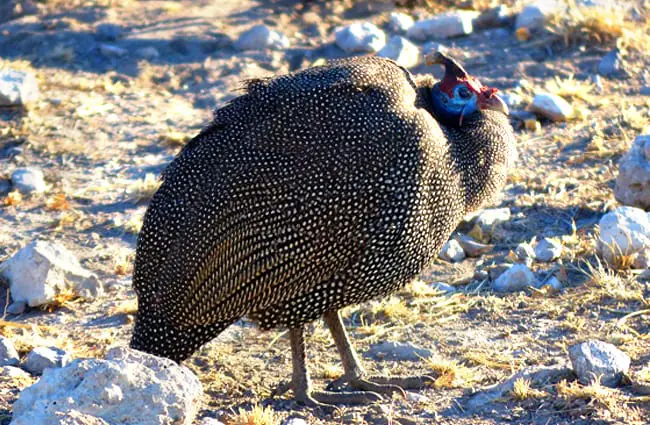
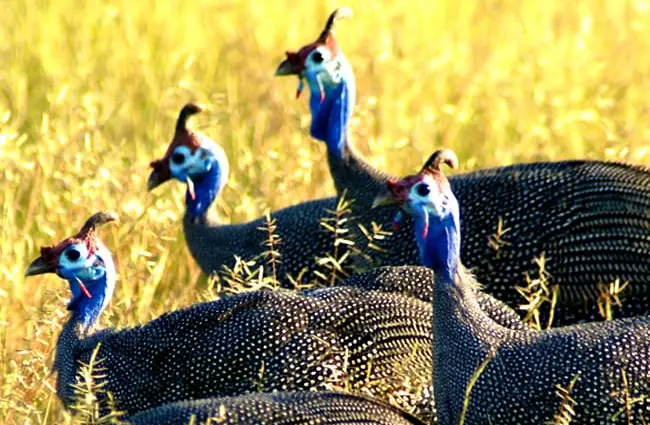



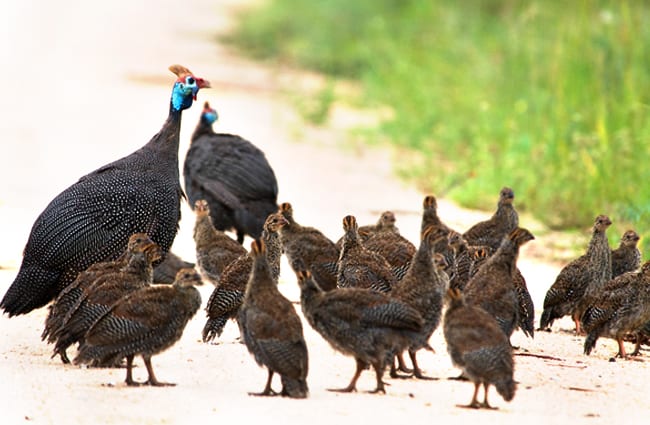
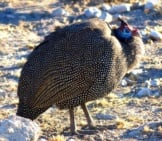
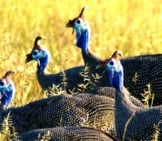


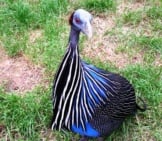
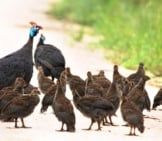
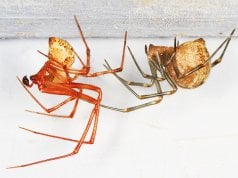
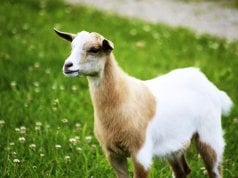











![Red Angus Closeup of a beautiful Red Angus cowPhoto by: U.S. Department of Agriculture [pubic domain]https://creativecommons.org/licenses/by/2.0/](https://animals.net/wp-content/uploads/2020/03/Red-Angus-4-100x75.jpg)

